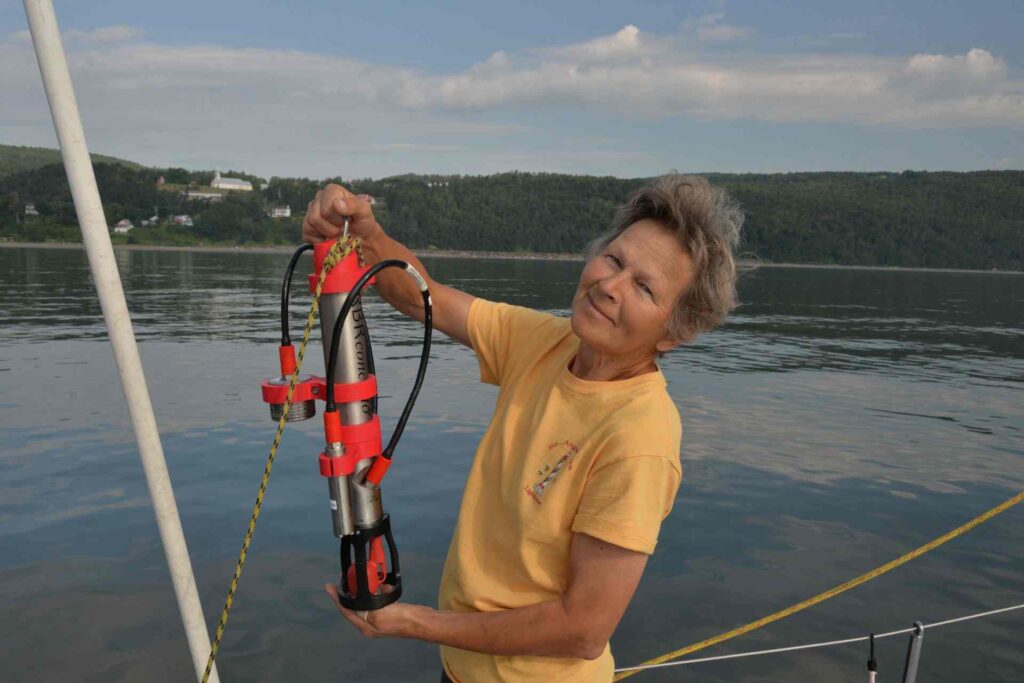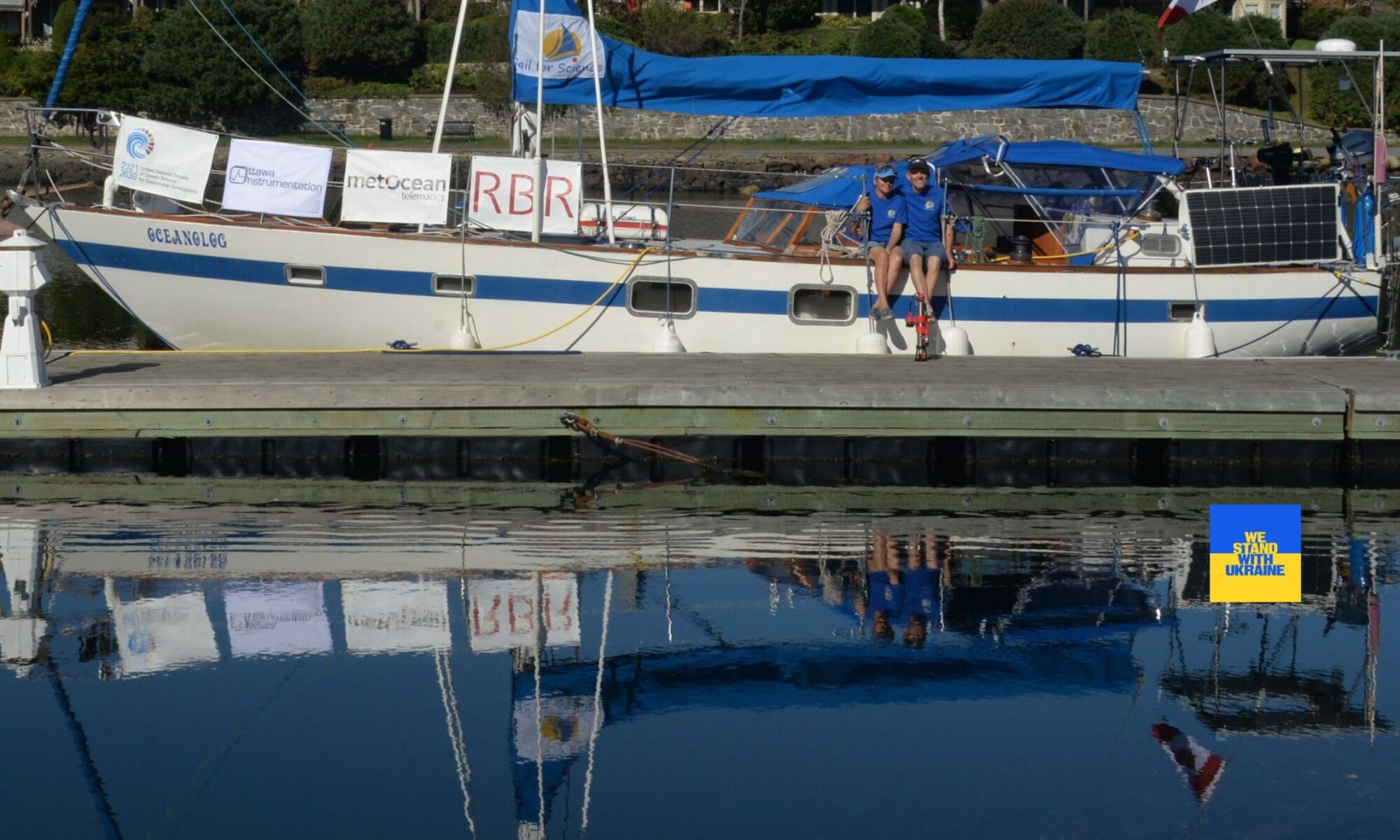A CTD measuring system directly measures Conductivity, Temperature and derives from measured pressure Depth.
CONDUCTIVITY is a measure of a material’s ability to conduct an electrical current. Seawater with a large number of dissolved salts has high conductivity, while freshwater has low conductivity. Temperature also affects conductivity: warm water has high conductivity, while cold water has low conductivity. Pressure also increases conductivity. The units for conductivity are Siemens/meter (S/m) or mS/cm. Conductivity typically ranges from 0 to 75 mS/cm for water ranging from freshwater to seawater.
TEMPERATURE is measured in ITS-90 degrees Celsius (°C). ITS-90 is an instrument calibration standard agreed to by a number of scientists in 1990, which provides for comparison and compatibility of temperature measurements internationally. For the ocean, temperatures typically range from -2 to 35 °C.
DEPTH: Despite having depth in the name, all CTDs actually measure pressure, which is not quite the same thing. The relationship between pressure and depth is a complex and involves water density and compressibility as well as the strength of the local gravity field (a function of the latitude). In oceanography, pressure in a body of water is measured in decibars; the sea (hydrostatic) pressure at the surface of the water is 0 decibars. As an approximation, each 1 meter depth of water is equivalent to 1 decibar (for example, the sea pressure is 10 decibars at 10 meters depth).
All parameters are recorded and stored in memory inside the instrument. After the equipment is back on deck, the data are transferred to the computer, viewed and analyzed.
You may ask: What about the SALINITY? Isn’t it one of the most important parameters of the sea water? You are right, it is. But the thing is: in precision world of science, salinity cannot be measured directly, it has a value of practical salinity, calculated by the formula using all three parameters measured by CTD measuring system and equations of the Practical Salinity Scale – 1978 .
Moreover, once we know practical salinity, we can calculate many other parameters, such as DENSITY and SOUND VELOCITY.
The term CTD measuring system is often used to describe the instrument that includes the actual CTD as well as some other measuring channels to measure other parameters. The set of sensors/measuring channels varies depending on the particular scientific mission and may include dissolved oxygen, pH, turbidity, Chlorophyll a, fDOM, transmissometer, PAR to name a few.
What can we do with data from a CTD?
• Estimate deep-ocean currents based on density variations
• Look for sharp density changes to investigate the interesting chemical and biological processes that go on there
• Look for the boundaries of surface ocean currents
• Look for the movements of different water masses near shore that indicate upwelling or currents that move sediment along the shore
• Calculate sound velocity at various depths, to refine acoustic investigation of the ocean bottom or acoustic investigation of objects in the water (such as submarines or torpedoes)
• Discover an area of very low oxygen, which can have a major impact on fish.
Profiling CTD measuring systems
A profiling CTD measures water parameters as it travels vertically through the water, typically lowered over the side of a vessel with a winch or by hand to take measurements of a column of water. For getting better space and time resolution during a cast, profiling CTD measuring systems equipped with fast temperature sensors and have high rate of sampling (up to 32Hz)
A cast is one down-and-up cycle of the CTD. Each cast consists of a downcast and upcast. Because of the way the CTD and other equipment are configured on the package, the data from the downcast is usually more accurate but still requires providing dynamic correction of data.
For more precise measurements, profiling CTD can also include a water sampler that collects discrete water samples on certain depths. Water samples are then analyzed and compared with the instrument readings for adjustments (onboard calibration).
Moored CTD measuring systems
A moored CTD, which is anchored on the sea floor, measures water parameters in one location, over an extended period of time, providing a time series of data that can reveal information about seasonal variations in the water, water current, incursion of pollutants into the area (such as an oil spill), etc.
What to read on the topic
Different kinds of CTD measuring systems made by various manufacturers around the world are well described on the website of our scientist Igor Shkvorets: https://salinometry.com/ctd-systems/
Also, on his website you can find the history of CTD measuring systems development: https://salinometry.com/history-ctd/

Sail for Science uses the CTD measuring system RBRconcerto3CTD made by Canadian company RBR Ltd. , where we have worked for 20 years.

